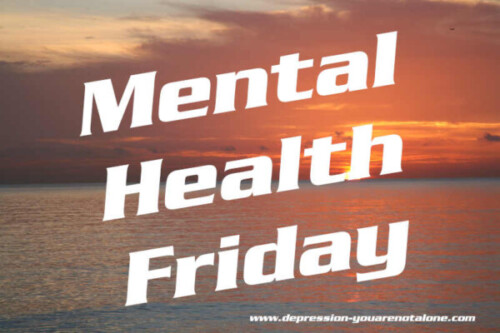Mental Health Friday 2024-05-31
On Mental Health Friday, we post, in alphabetical order, one per week, information on mental health disorders. Mental Health Friday is for informational purposes only, and is in no way meant to diagnose, treat or cure any disease. Please do not self diagnose and seek professional help for what ails you.
FindTreatment.gov is an online source of information for persons seeking substance use and/or mental health treatment facilities in the United States or U.S. Territories.
.
Physical Abuse
Editorial Team
Physical abuse is a form of maltreatment that involves the intentional infliction of physical harm or injury upon another person. It is characterized by actions that cause pain, injury, or impairment to the victim’s body. Physical abuse can take various forms and may involve hitting, punching, kicking, slapping, shaking, burning, or using objects to harm the victim. It can occur in any context, including within families, intimate relationships, institutions, or by caregivers.
Here are some aspects to consider when defining physical abuse:
- Types of Physical Abuse:
- Direct Physical Violence: This involves the perpetrator directly inflicting harm on the victim through actions like hitting, punching, or kicking.
- Indirect Physical Violence: This includes behaviors such as locking someone in a room, restraining them forcefully, or denying them access to food, water, or medical care, which can also result in physical harm.
- Signs and Symptoms:
- Physical injuries such as bruises, cuts, burns, fractures, or welts.
- Frequent injuries that are inadequately explained or appear to be inconsistent with the explanations given.
- Fear or anxiety when around the abuser.
- Unexplained changes in behavior, such as withdrawal, depression, or aggression.
- Risk Factors:
- Substance abuse by the perpetrator.
- History of violence or abuse within the family.
- Social isolation or lack of support networks.
- High levels of stress or financial difficulties.
- Presence of mental health issues, such as personality disorders or impulse control problems.
- Effects on Victims:
- Physical consequences: These can range from minor injuries to severe trauma, disability, or even death.
- Emotional and psychological effects: Victims of physical abuse may experience fear, anxiety, low self-esteem, depression, post-traumatic stress disorder (PTSD), or other mental health issues.
- Long-term impact: Physical abuse in childhood, for example, can have lasting effects on a person’s physical and mental health, as well as their relationships and overall well-being.
- Legal and Social Implications:
- Physical abuse is considered a criminal offense in many jurisdictions, and perpetrators may face legal consequences, including fines, imprisonment, or court-mandated rehabilitation programs.
- Social services and support systems are often involved in cases of physical abuse to ensure the safety and well-being of the victim, provide counseling and support, and facilitate access to resources such as shelters or legal assistance.
- Prevention and Intervention:
- Education and awareness-raising campaigns aimed at recognizing the signs of physical abuse and promoting healthy relationships and non-violent conflict resolution.
- Early intervention and support for families at risk of or experiencing violence, including access to counseling, parenting support, and financial assistance.
- Legal measures to protect victims and hold perpetrators accountable, including restraining orders, prosecution, and monitoring of high-risk individuals.
Overall, physical abuse is a serious violation of human rights and can have profound and long-lasting consequences for individuals and communities. It requires a multi-faceted approach that addresses both the immediate safety of victims and the underlying factors contributing to violence.

